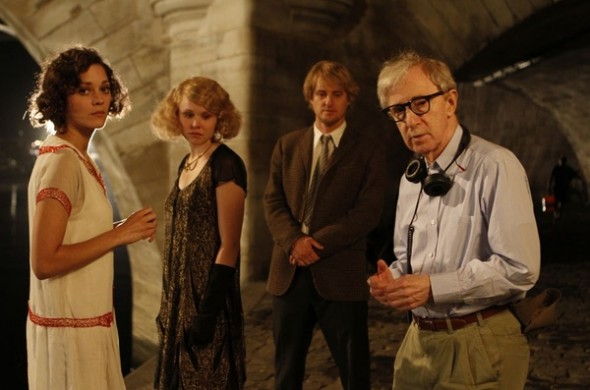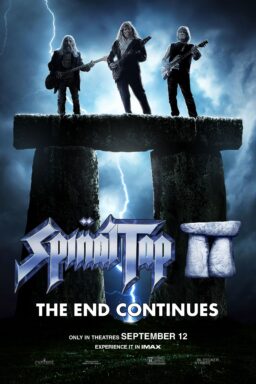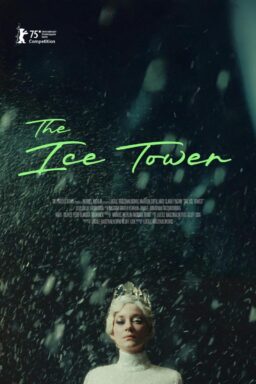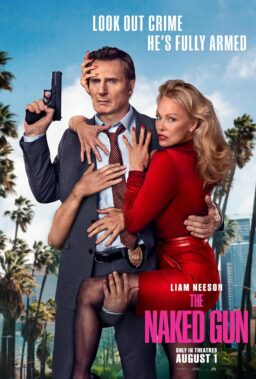The act of binge-watching has been normalized thanks to addictive, serialized TV shows and Netflix revivals, but what about the act of binge-watching an artist’s entire oeuvre, especially one as expansive as Woody Allen’s? What could be learned from that? To study the evolution of an artist’s voice and vision is to study their life. It is a biographical account. It may not tell the entire story, but it is a gateway to understanding someone’s personality, their pain, their desires and their sense of responsibility as to what to put out into the world.
On January 3rd, 2016, I started a year-long binge-watch by watching a Woody Allen movie every week for a year; 52 films over 52 weeks. It started with “What’s New, Pussycat?” and ended on Monday, December 26, 2016 with “Cafe Society.” All of his films, in chronological order. 48 directorial efforts, plus two that he wrote, but didn’t direct (“What’s New, Pussycat?” and “Play It Again, Sam”) and the two starring roles that I felt were noteworthy enough to be included (Martin Ritt’s “The Front” and Barbara Kopple’s documentary “Wild Man Blues”).
As film critics, we must sometimes acknowledge that how and/or when we see a movie affects our opinion of it. I came into this as a fan of Woody Allen’s work, but like many, my fandom has waned over the past 15 years or so. I skipped many of his films during this time. I discovered his work as a teenager in the mid-80s when I first saw “The Purple Rose of Cairo,” still my personal favorite and an important film in my life. My taste in films started to change at around that time and I was eager to see more than what was marketed to me and others in my age group. After “The Purple Rose of Cairo” I anticipated every film of his and saw most of them (I skipped “September”). So, I started this project as a fan and grateful that some of the films would be fresh to me. Some I hadn’t revisited in decades. Some I go back to regularly.

Early in the year, starting with his comedies, it was mostly delightful, but at around March, I was eager to skip ahead and get to the “Annie Hall” era when things got more interesting. Then I couldn’t wait to get to the Mia Farrow films, arguably his strongest run, full of ups and downs, but the working relationship they had was fascinating. The ‘90s saw him going back to comedies while dealing with the scandal that broke them up. I still enjoyed this weekly ritual of revisiting his work. It wasn’t until I got to the month of September—the DreamWorks years—that I started looking ahead at the calendar, praying for the end. My morale shifted during this time. Those last four months were brutal.
When revisiting his early pre-”Annie Hall” comedies, I noticed was how far ahead of his time he was as an innovator and how much influence he would have in the decades to come. His first film, “What’s Up, Tiger Lily?” (1966), in which he took a Japanese spy thriller and dubbed over it with absurd dialogue, makes for an interesting benchmark in the world of comedy, for here is a film that breaks the fourth wall in a way that brings to mind Joe Dante’s “Gremlins 2: The New Batch,” Mystery Science Theater 3000, Monty Python films and those of Zucker/Abrahams. “Take the Money and Run” (1969) could very well be the first mockumentary ever made. “Everything You Always Wanted to Know About Sex (But Were Afraid to Ask)” (1972) was not only the first film to be adapted from a self-help book, but also the first anthology comedy. “Sleeper” (1973), with Diane Keaton, had a storyline that would go on to inspire such movies as “Austin Powers: International Man of Mystery,” “Late For Dinner” and “Idiocracy.” This innovation to play with the form continued with “Zelig” (1983), which is impossible to watch without thinking of “Forrest Gump.” Both films have ground-breaking special effects, but “Zelig”’s is all the more astonishing because of the technical limitations of the time.
Watching all of these early comedies, as funny as they are, filled me with greater anticipation for what I knew was coming: Artistic leaps forward followed by great failures. I couldn’t wait for either of those. When looking at an expansive body of work, the order of the projects can be very telling. Just ask any Beatles, David Bowie, Madonna, Prince or U2 fan and they’ll tell you they all have a favorite era. Most of the time, those radical changes in sound came out of a previous artistic failure or a frustration with churning out the same thing and a need to challenge an audience. “Annie Hall” (1977) was Allen’s most successful film, earning him and Keaton their first Academy Award. In it, he tells the viewer, “I could never belong to a club that would have someone like me for a member.” His follow-up film, the deadly serious “Interiors” (1978), showcased a revered director who seemingly went to great lengths to risk failure. In the context of this project, it’s a thrill to watch.

Then came his films with Mia Farrow (1982-1992), arguably Allen’s strongest and most acclaimed run of films, starting with “Zelig” and concluding with “Radio Days” (1987). When revisiting their last film together, “Husbands and Wives” (1992), released during their separation, which was all over the tabloids thanks to Woody’s affair with Farrow’s adopted teenage daughter Soon-Yi Previn, it’s still hard to watch without thinking of the parallels, especially when watching Allen and Farrow arguing over the course of an evening.
As I wrote in my Letterboxd review: “Allen is empathetic towards the Farrow character, which makes it even more interesting. She wins many arguments. But when looking back on the films they made together, one almost has to re-assess everything and ask, “How much of it was Woody Allen projecting his feelings on Mia Farrow at the time?” In their films together, she was often an emotional victim, in a bad marriage, coping with Catholic guilt or dealing with not being sexy enough. Their on-screen chemistry was always believable and in this film and you can tell they were working through something in the process of its production. When Farrow finally says to him, ‘It’s over and we both know it,’ it has a whole new meaning.”
During this time, Allen shifted back into full comedy mode for a few years as a way of coping with the stress of divorce and to win back his audience. Suddenly, though, the work turned angrier and it seemed that Allen turned inward and dared his audience to keep following him. The dark “Deconstructing Harry” (1997), the awful “Celebrity” (1998) and the so-so “Sweet and Lowdown” (1999) showed Allen putting unlikeable characters at the center of the stories. “Deconstructing Harry,” in particular, was Allen’s most R-rated film and almost seemed like a bourbon-induced confessional. Also released during this time was Barbara Kopple’s documentary “Wild Man Blues” (1997), which followed Allen and Soon-Yi all over Europe during a jazz tour. It’s interesting that Allen would choose this time to allow cameras to follow him around, since he has always strived to maintain privacy. With these four films, it seemed like he wanted to set the record straight on his flaws as a human being (many), how he feels about his audience (not flattering) and how he views his work (overrated).

Then came his deal with DreamWorks (2000-2003) and a string of ups and downs (mostly downs) for the next sixteen years. Yes, it is amazing that Allen can crank out a screenplay and film every year, but when watching them in this way, fatigue starts to take hold. “Match Point” (2005) was considered an artistic comeback, but is it really as great as people said it was? Or did it just seem great because the three films that came before it were the absolute worst? That is a question that comes up often during this period. Is this film really good or is it just good because it’s isn’t awful? “Midnight In Paris” (2011) is the only one I can say, for certain, truly is that good.
Allen has often said that he never goes back and views his films. As a filmmaker myself, I can attest that it is hard to go back and view past works, so I believe him. He started out decades ago as an innovative, comedic genius, then grew into a serious filmmaker and succeeded in maintaining his own voice and taking risks. But the majority of his films (not all) over the past decade and a half have been reruns of past successes. The dialogue leans too heavily on dry exposition. The dark morality tales have become contrived and laughable. The characters are more aimless and the actors more detached from the material. It seems as though he is just making films for the sake of it and doesn’t know where or when to stop. “Midnight In Paris” would have been the perfect place.
And yet, hearing Allen as the narrator of his most previous film, “Cafe Society” (2016), there is something strangely appropriate about hearing his aged, imperfect, weathered voice as the final film in this project (I did not watch the Amazon series). It is the sound of a storyteller who will not cease, no matter if you’ve heard this one before (in this case, yes, but it’s not all bad). He is now in his 80s and has another film project in the works, starring Justin Timberlake and Kate Winslet. And probably another one after that. It’s a routine, both for him and his audience who come to expect a new one every year. The fact that Allen doesn’t care if he’s repeating himself shows that it is no longer about the art, but more about the need to keep going. He would probably say he does it to avoid thinking about death and that’s fair.
I decided to make this into a writing project. For each film, I would write a review to be posted on my Letterboxd page and I would write a personal journal entry that may or may not have to do with the film (I didn’t publish the journal part). I had rules:
1.) In the review, I could only refer to films Allen made before the one I was watching. I couldn’t say “he would later expand on these themes or revisit this style with ‘Alice’…” Everything had to be written as though future films didn’t exist yet. 2.) I had one week to watch each film, starting Fridays. I could not move onto the next film until I had finished writing about the last one. No double or triple features either. 3.) No reading or watching other people’s reviews prior to or after watching the films and no watching the two-part PBS documentary, “Woody Allen: A Documentary” (2011).
I also made notes on the film’s release date, how I watched the film and how/where I first saw the movie long ago. I enjoyed seeing a small part of my own life story change as a film watcher, going from VHS video store rentals to laserdiscs to opening weekends in the theater to screenings at the Lake Street Screening Room to DVD award screeners and Blu-rays. I stuck with the plan of one film per week. In July, I was out on an epic road trip, so I had to upload one of the films onto my iPad. I watched “Mighty Aphrodite” (1995) in a tent late at night while camping out at the Grand Canyon. I was dedicated.
And I’m still a fan, even though I will not watch any of his films again for a few years. I’m cool with not hearing any Dixieland jazz for a long, long time. Would I do this again? Maybe in five or six years. When I do, I’ll probably choose Hitchcock.
To see Collin Souter’s full ranking of each Woody Allen film on Letterboxd, click here.













